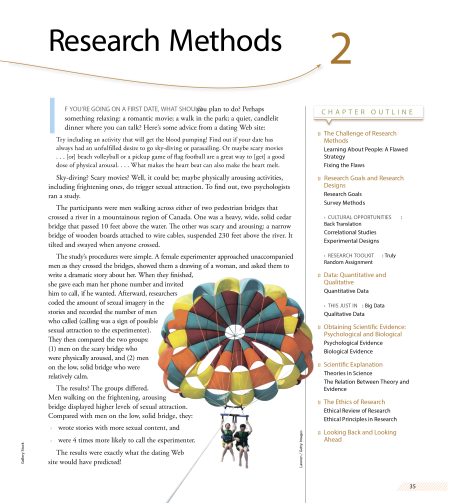Chapter 2. Research Methods
2.1 Introduction


2.2 Slide 2
Welcome to your Try This! research experience for Chapter 2. As you learned when reading the chapter, you will be introduced to a research procedure that psychologists use to obtain scientific evidence.
In a moment, you will be presented with a series of color words (red, yellow, blue, or green). Sometimes the word and its color will be consistent. For example:
red
Sometimes, though, the word and its color will conflict. For example:
green
Your job is to name the color of the word, as quickly and accurately as possible. The first two trials are practice trials.
2.3 Slide 3
2.4 Slide 4
2.5 Slide 5
2.6 Slide 6
2.7 Slide 7
2.8 Slide 8
You have just completed an activity called the Stroop Task, named for the psychologist who first created the task. Here are your results.
If you’re like most people, you were much faster to respond when the word and its color corresponded to each other than when they conflicted. This is a classic finding, and one that helps psychologists understand how the mind works.
Before you return to the text for more information, take a moment to think about what this task indicates about how the mind works.